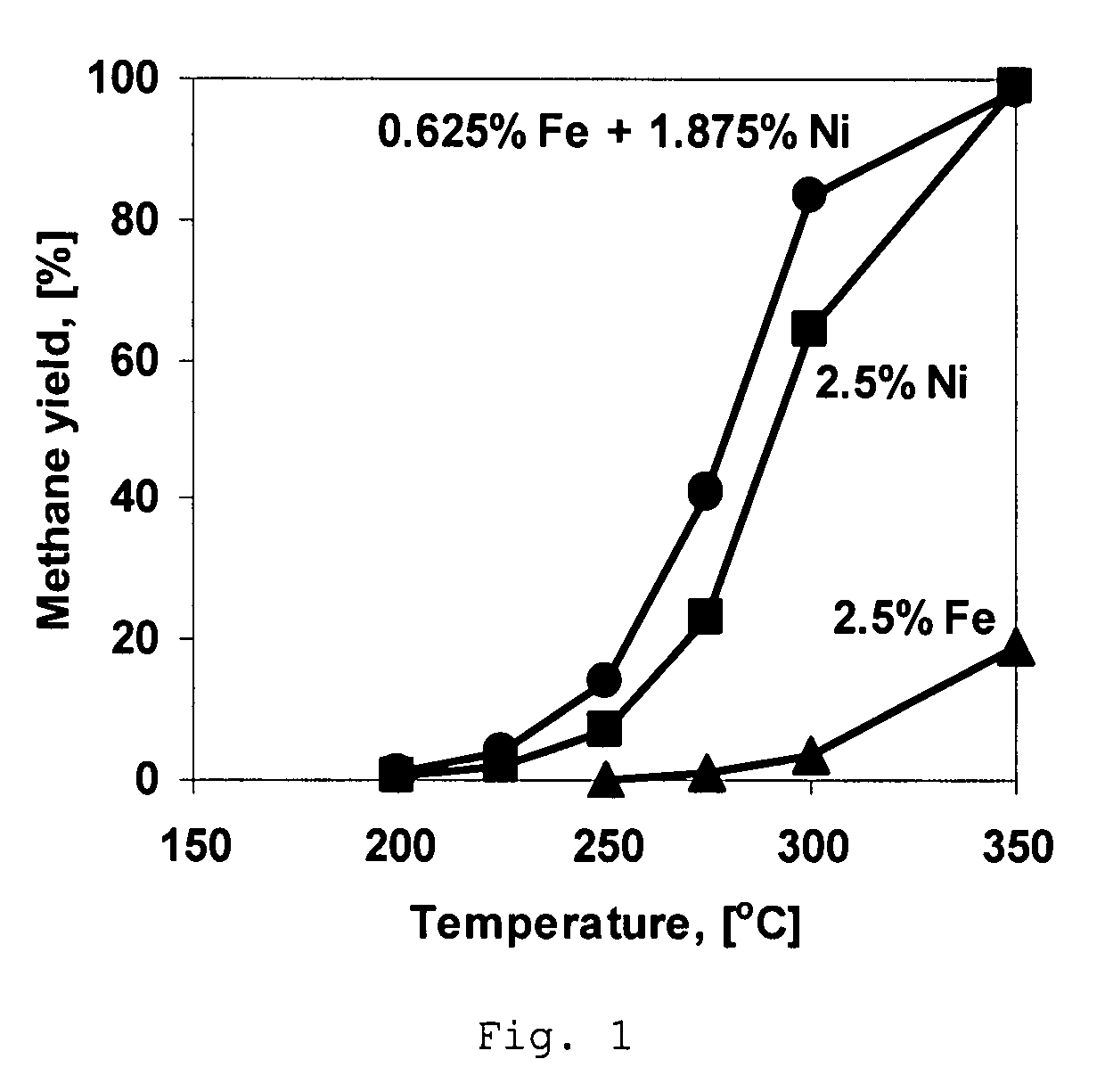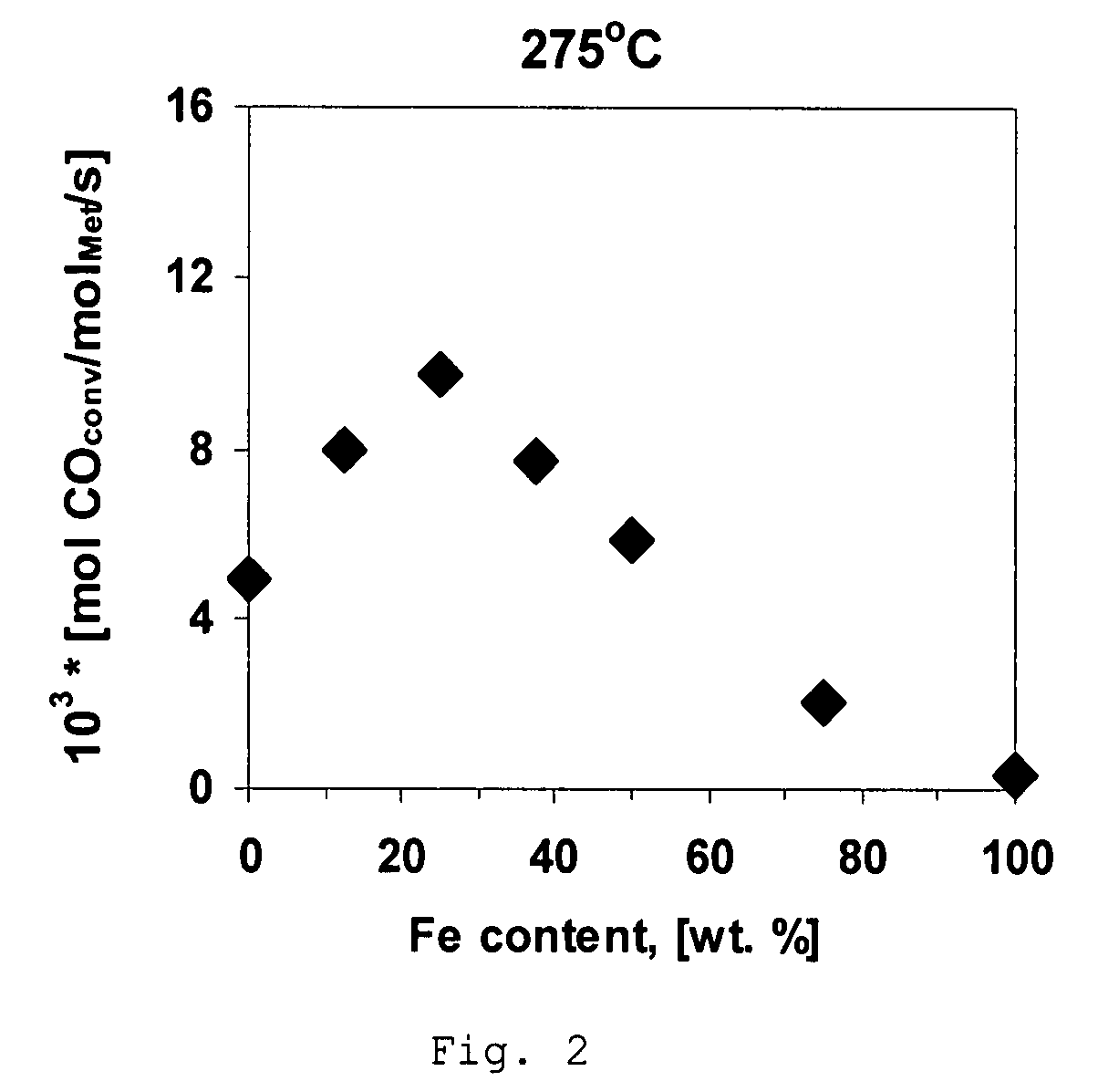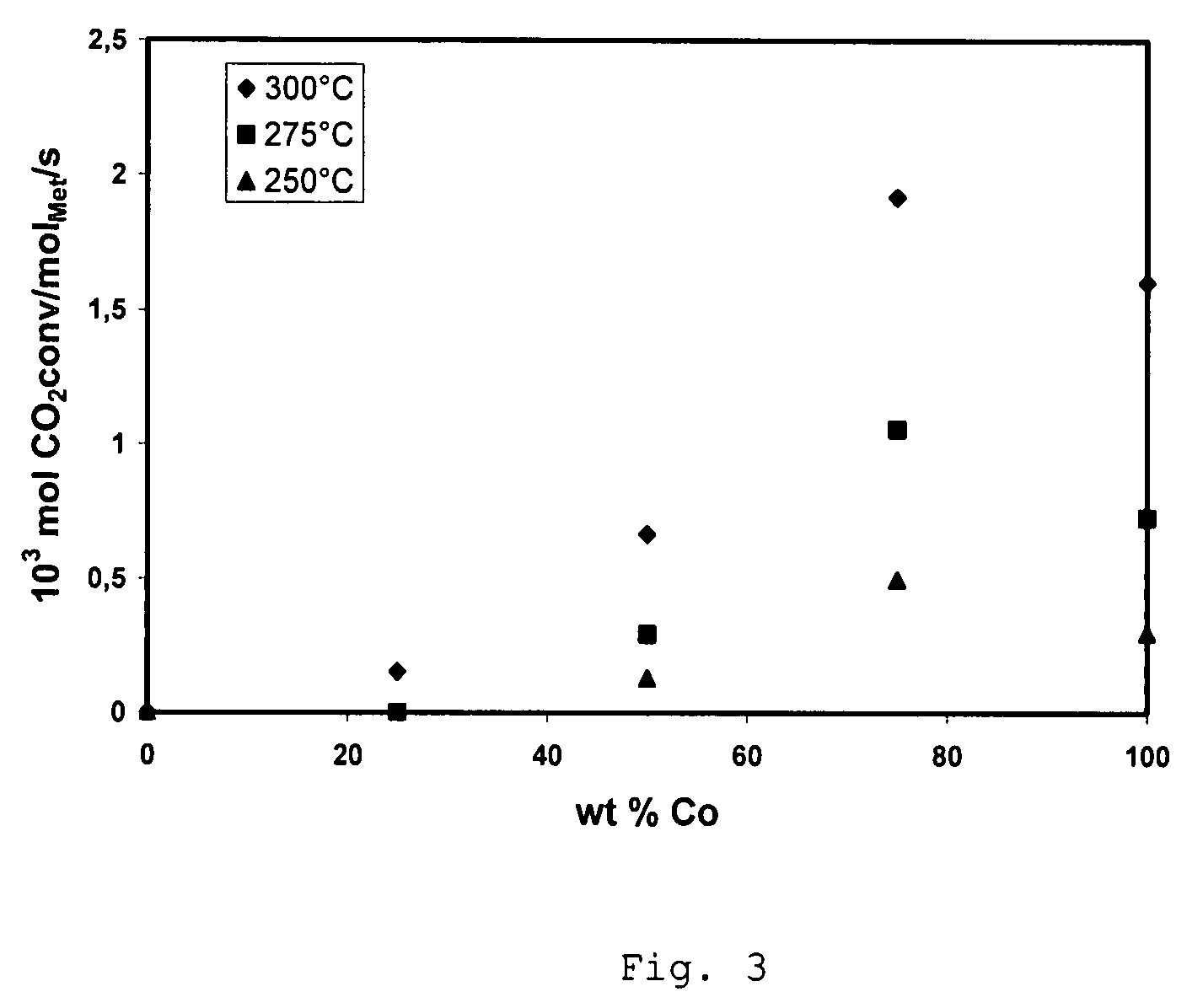Process and catalyst for hydrogenation of carbon oxides
a carbon monoxide and catalyst technology, applied in the direction of physical/chemical process catalysts, metal/metal-oxide/metal-hydroxide catalysts, hydrocarbon preparation catalysts, etc., can solve the problems of reducing the effectiveness of co, undesired carbon monoxide in feed gases, and high undesirable co presence, so as to improve the methane activity of carbon monoxide and dioxide to methane
- Summary
- Abstract
- Description
- Claims
- Application Information
AI Technical Summary
Benefits of technology
Problems solved by technology
Method used
Image
Examples
example 1
[0040]A comparative Ni-containing catalyst was prepared using incipient wetness impregnation of spinel-type MgAl2O4 support having particle size from 0.25 mm to 0.5 mm and having pore volume of about 0.7 cm3 / g and a surface area of about 70 m2 / g with an aqueous solution of nickel nitrate (Ni(NO3)2) such that the resulting catalyst has about 2.5 wt % Ni. Prior to the impregnation the support was dried in the oven at 200° C. for 5 hours. A period of about 4 hours was allowed for the salt solution to fill the pores of the carrier. The impregnated spinel is then dried at room temperature for 12 hours and then heated in air up to 500° C. with a heating rate of 2.5° C. per minute and kept at 500° C. for 5 hours.
example 2
[0041]A comparative catalyst is prepared following the method of Example 1 except that nickel nitrate is replaced by the iron nitrate, Fe(NO3)3, to obtain a catalyst containing about 2.5 wt % Fe.
example 3
[0042]A catalyst is prepared using incipient wetness impregnation of support as in Example 1 except that the concentration of Ni(NO3)2 is decreased to obtain 2.1875 wt % Ni in the resulting catalyst. After impregnation the sample was dried at room temperature for 12 hours and impregnated with the solution of Fe(NO3)3 to obtain an iron concentration in the resulting catalyst of about 0.3125 wt %. Impregnated catalyst is then dried at room temperature for 12 hours and then heated in air up to 500° C. with a heating rate of 2° C. per minute and kept at 500° C. for 5 hours.
PUM
| Property | Measurement | Unit |
|---|---|---|
| total pressure | aaaaa | aaaaa |
| reaction temperature | aaaaa | aaaaa |
| reaction temperature | aaaaa | aaaaa |
Abstract
Description
Claims
Application Information
 Login to View More
Login to View More - R&D
- Intellectual Property
- Life Sciences
- Materials
- Tech Scout
- Unparalleled Data Quality
- Higher Quality Content
- 60% Fewer Hallucinations
Browse by: Latest US Patents, China's latest patents, Technical Efficacy Thesaurus, Application Domain, Technology Topic, Popular Technical Reports.
© 2025 PatSnap. All rights reserved.Legal|Privacy policy|Modern Slavery Act Transparency Statement|Sitemap|About US| Contact US: help@patsnap.com



